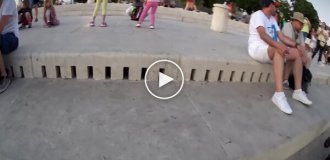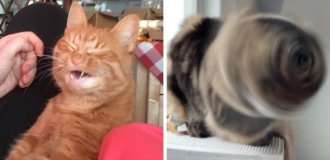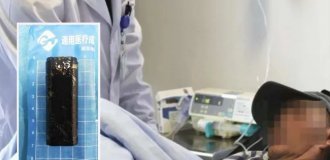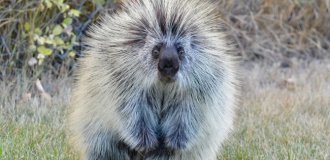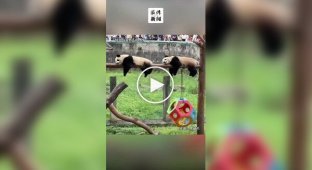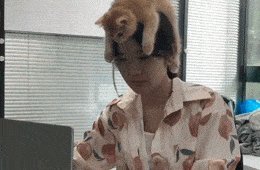Panda ascidians: living "skeletons" on the ocean floor (8 photos)
Some people have skeletons in their closets, but we have them at the bottom of the ocean! Meet a completely new species of ascidians nicknamed "panda skeletons". They were discovered quite recently, but the animals have already managed to conquer the Internet. 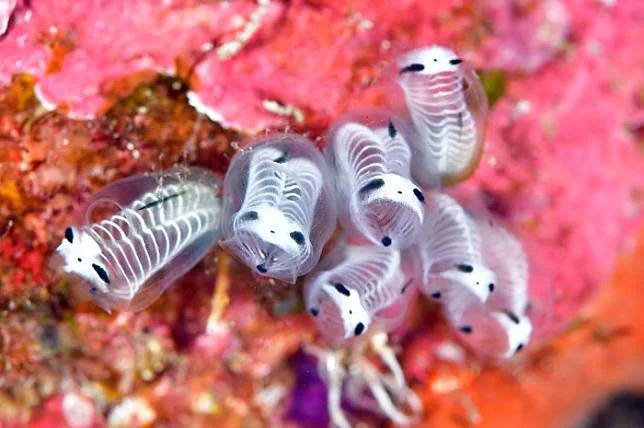
Congratulations, we have found the spirit animal of all those who get up at 6 am for work!
These guys look like something between the restless souls of giant pandas and aliens from Aldebaran. Only 2 centimeters tall, but how many questions about their appearance! The cute face with eyes and nose contrasts with the veins that resemble ribs and a spine. Are they going to celebrate Halloween like this? 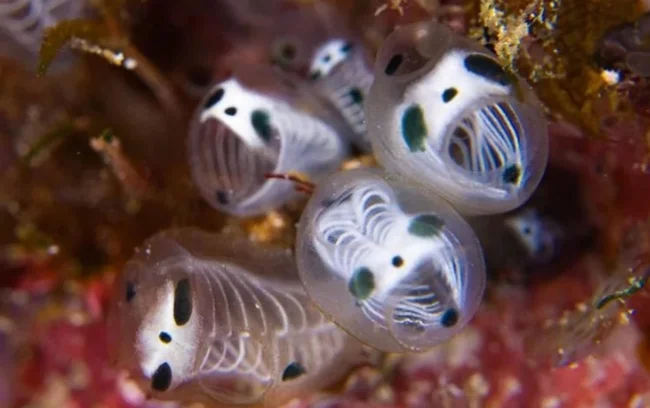
When the kids have slept through their night at 5 a.m. and come to wake you up.
In fact, the creatures belong to the class of ascidians. These are fairly simple animals in structure. Everything you see in the picture is the result of our imagination. They don’t have a face or eyes — it’s just a good arrangement of pigment spots. And there are no bones either, these “ribs” are blood vessels that shine through the transparent body of the sea creature. 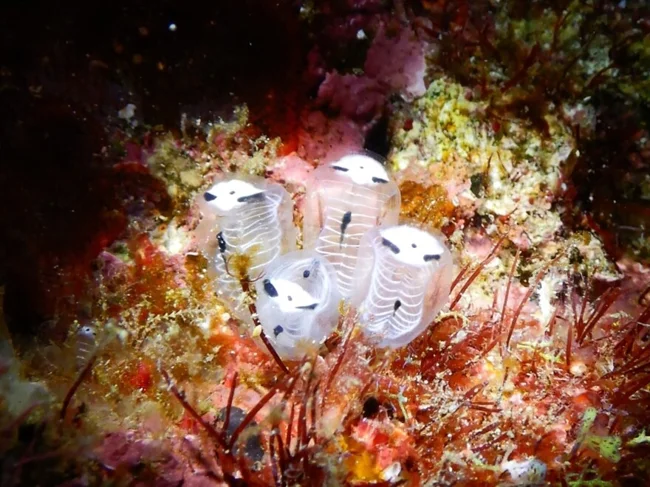
Look how our perception depends on the angle! In this position, these creatures do not seem creepy!
All ascidians live by a very simple principle: sit and enjoy and don't give a damn. These creatures do not know how to hunt or nibble grass. They are not even capable of movement. The only thing they can do is filter everything that is carried in by underwater currents. 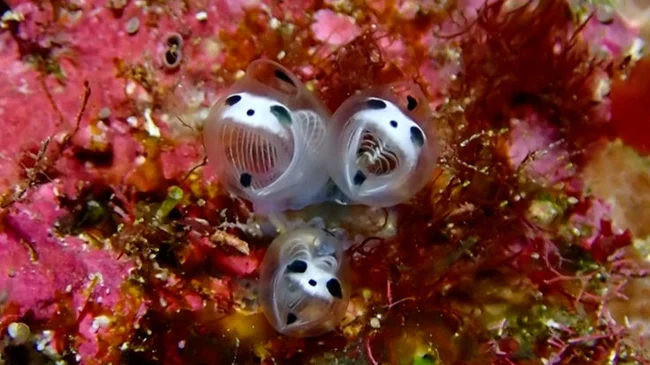
And it seems as if ascidians feed not only on plankton, but also on the souls of sinners.
Through the oral siphon, the animal sucks in water using its tentacles. Then the animals filter the liquid for edible particles. All the nutrients are digested in the intestine and stomach, and the remains are evacuated out through a special valve near the muzzle. In addition to organic matter, ascidians accumulate a large number of harmful substances and heavy metals without harming their health. So we do not recommend trying the skeletons themselves. 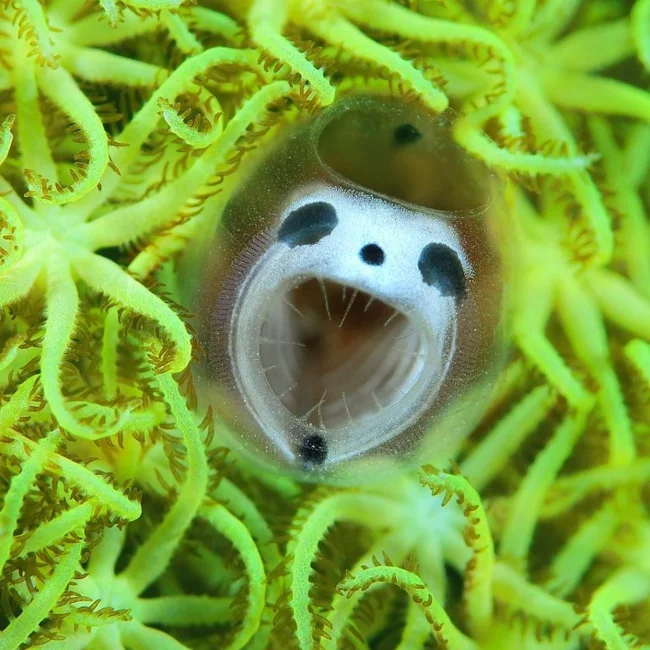
It's a good thing her mouth and teeth are fake!
They say that these tiny skeletons are found only off the coast of the Japanese island of Kume. You can only get there and dive safely in winter. The rest of the year, diving on Kume is inaccessible due to strong currents and wind. But considering that this species of ascidians was discovered only eight years ago and described only in 2024, let's not be so categorical. Perhaps in the future, divers will encounter pandas somewhere else and learn a little more about their preferences for where they live. 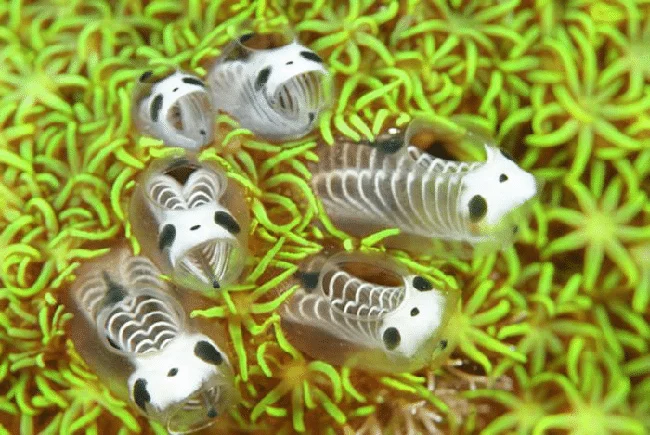
All the bad pandas end up on the Japanese coast.
For now, we are sure that the animals like to settle in places with fast currents. With the help of special "tentacles" resembling plant roots, they attach themselves to coral reefs at a depth of 10 to 20 meters, in places with the strongest currents. This is because the skeletons stay in one place throughout their entire lives. They stay attached as they were. 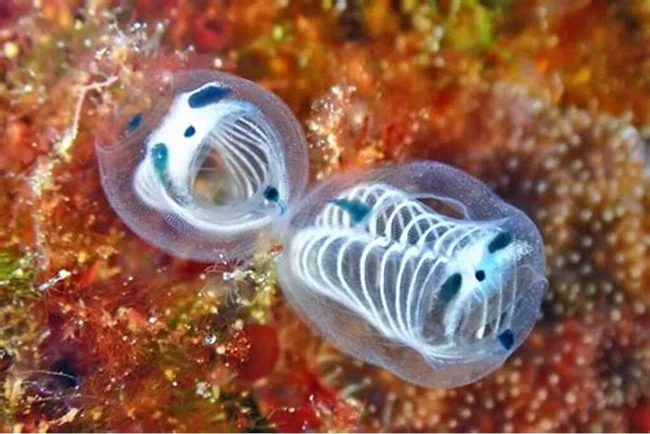
When you want to bite your other half on the butt.
How do they reproduce then? Without contact! Firstly, ascidians can bud. Yes, like plants: a new "sprout" can appear from a large colony if there are enough nutrients in the water. Secondly, ascidians can fertilize themselves, because they are it. That is, a hermaphrodite. A colony of ascidians has both male and female reproductive cells. Therefore, the panda simply mixes them in water, and larvae are obtained! 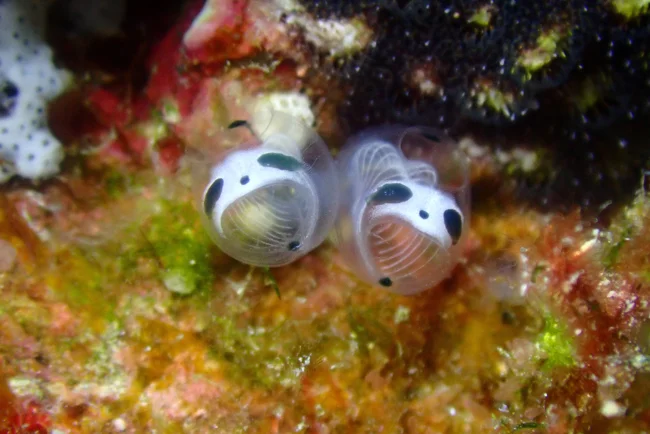
The same girlfriends who are always on diets.
The tadpoles are not at all like their lazy parents. Tiny, 1.2 mm in size, they strive to conquer new horizons. They have a notochord, they have the beginnings of a brain, they have a desire to live! But time will pass, the little ascidian will find a good place and firmly grow roots into it. Thus, it will turn into a primitive thing, capable only of filtering.
